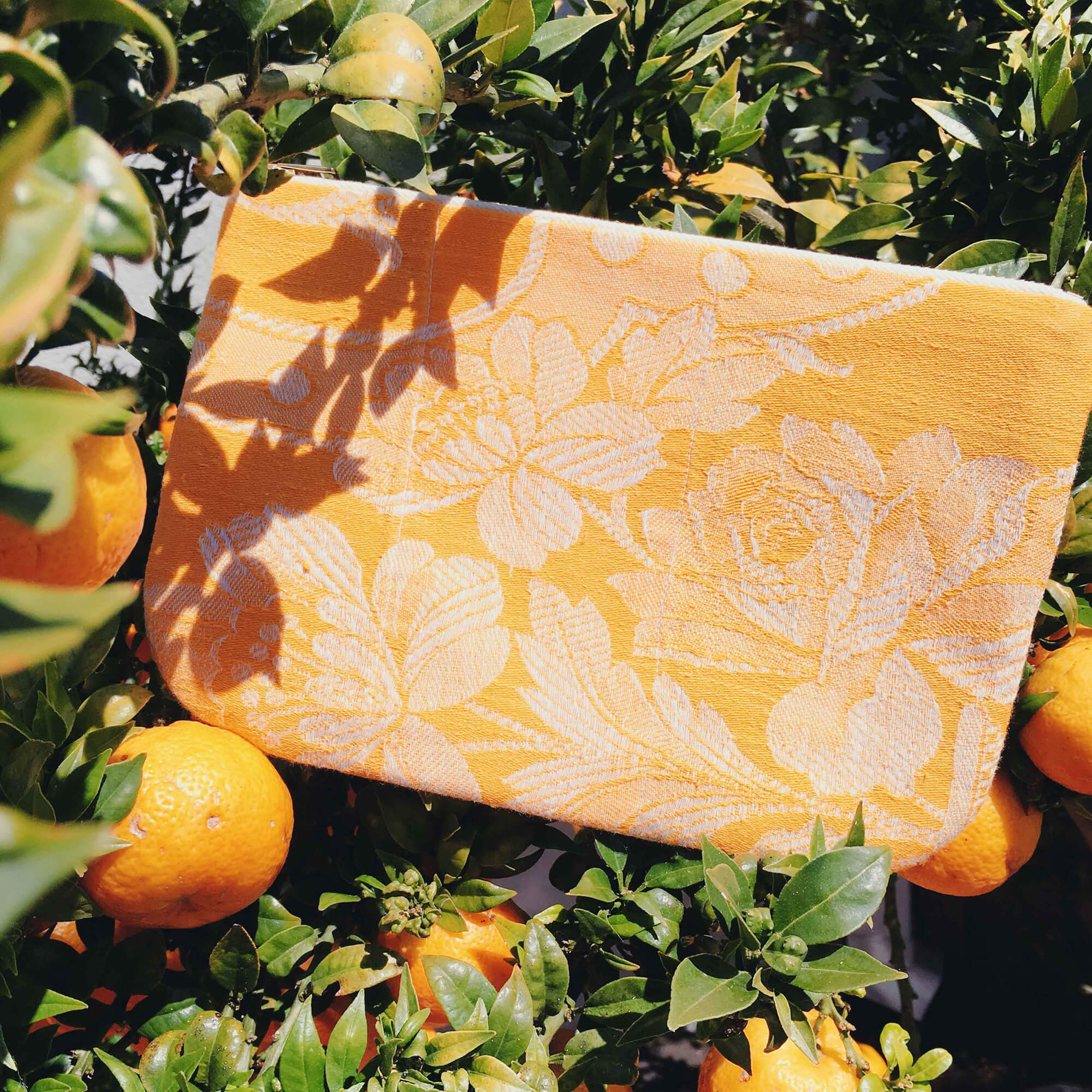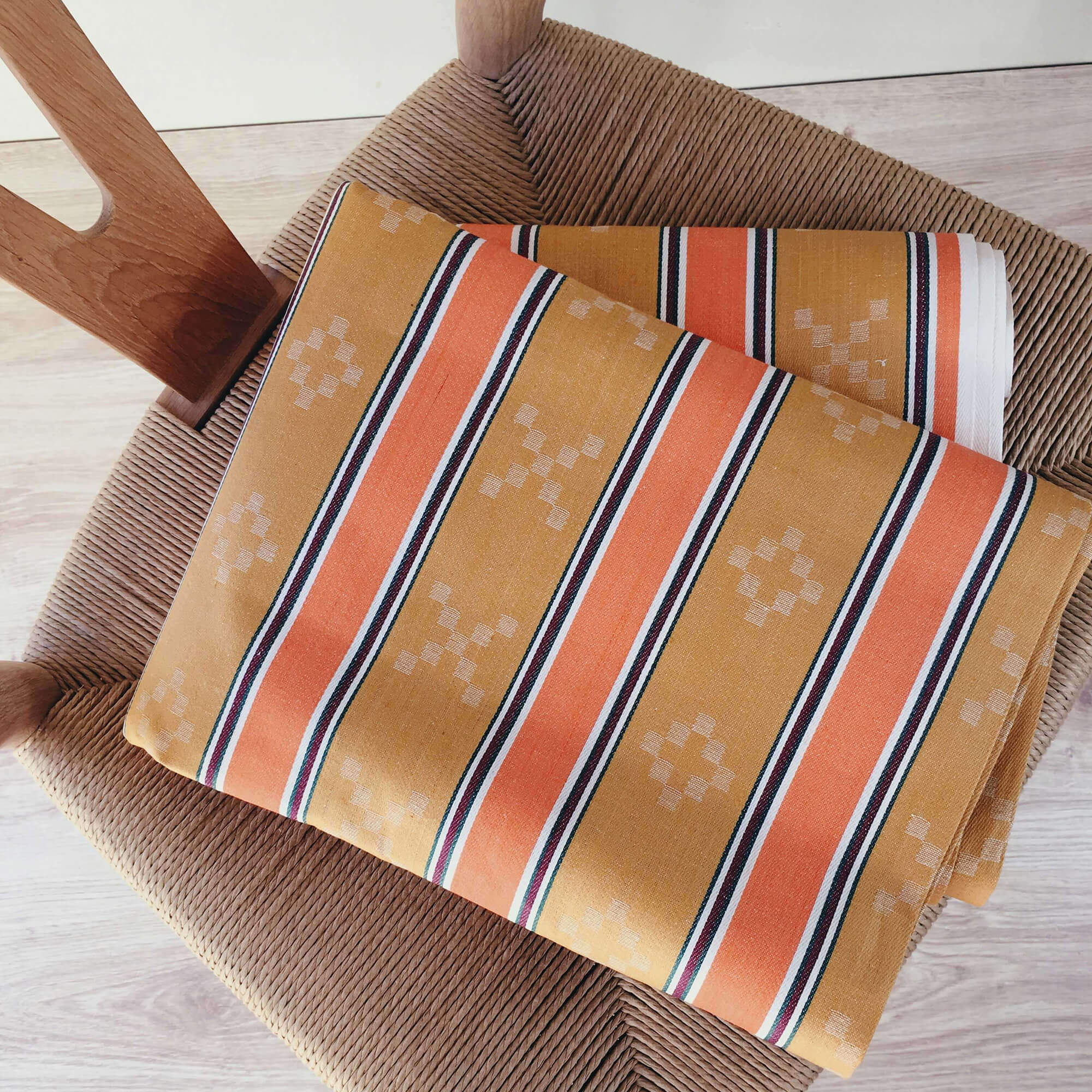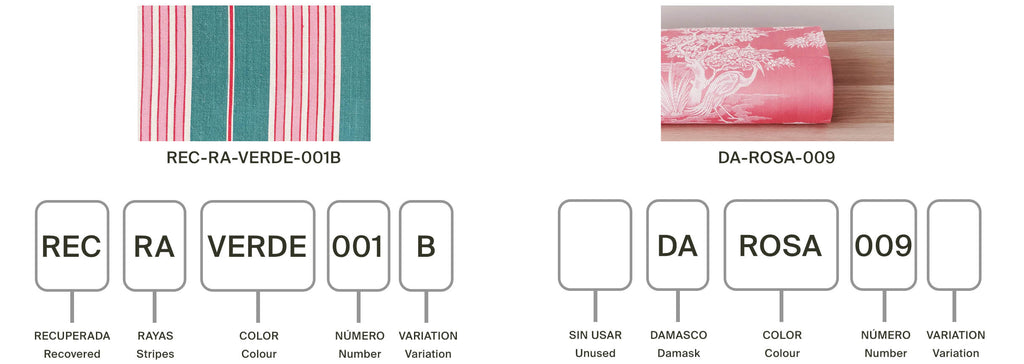

Frequently Asked Questions
Why different panels?
In the case of Spanish ticking, wool makers opened the covers to take advantage of the wool, and that process was not always symmetrical nor forgiving. Fortunately, for many years this preserved the fabrics that we can now enjoy, even if it is in panels of very different sizes.
Do all ticking fabrics have patches or eyelets?
Not all, but most of the recovered panels have patches or eyelets, a method used to make the tufting. Sometimes they have curious ribbons or patches on the back, something genuine from Spanish mattresses. Depending on your desires and the use that is going to be given to the panel, it may or may not be important. We note this in each listing, in case this is a consideration for you in either direction. Our unused yardage is preserved as it left the factory so it is continuous.
Do you have larger quantities of your ticking fabrics?
We have thousands of fabrics catalogued and many more in our back stock, that we continually recover and find. As a guide, the maximum for a single recovered panel is about 150x400 cm (59 x 157 in.). That said, we often find several panels of the same fabric and color, so it is possible to combine them to obtain larger quantities. In the case of unused yardage, the amounts that we find vary, from 4-8 meter lengths up to 12-24 meter bolts. With a fabric width of about 100-110 cm to 150-160 cm.
Color Fastness and Care
Due to the age of our fabrics we cannot guarantee the dyes used in the colors. We have experimented with many of the fabrics, their reaction to water, etc. Most of the recovered fabrics can be machine washed (with similar colors, in cold, and with a strong spin), and some of the unused ones, too. However, the results are so varied that we do not always recommend washing with water.
ROSARIO SAYS: “If you don't want surprises, dry clean” (Of course, you can always ask us for extra fabric to make your own inquiries). There may be shrinkage.
Our fabrics were manufactured to be mattress covers. A use very far from all natural light. That is why it is better not to continuously expose them to intense sunlight.
Are the fabrics as beautiful as in the photographs?
No, they are even more so :) We try to be very faithful to reality, both in the color of the images and in the description and condition. But if you have any questions, ask us. Also the best way to feel a fabric is to see it and touch it, and our samples are a great help for that.
What uses can I give to these fabrics? Are they suitable for upholstery?
For each textile we describe the weight and density of the fabric: light, medium and heavy. With its nuances. But if you have questions, write to us and we will explain in more detail. We or our clients have made everything from pants to a kimono or blouse, from curtains for kitchen counters to Roman shades, and bed headboards. Sofas and chairs have been upholstered; Cushions, lampshades, toiletry bags, Christmas decorations, gift bows and even greeting cards have been made. That is, everything that our imagination can create and if the fabric is too light for the desired use, you can always use a stabilizer to give it more consistency.
Do they have any flammability or rub tests?
Due to their age, our old fabrics have not had any fireproofing, anti-stain treatment or rub tests. If they are going to be used for public or commercial use, these treatments must be carried out by a third party specialized in this work.
Color Matching
Our fabrics are vintage, so we cannot guarantee that two seemingly identical pieces will have exactly the same color tones. Each fabric has had a life of use, washing, light or storage. If you need an exact color match, we recommend that you order a sample and reserve the appropriate amount of fabric.
What do the letters and numbers in the references mean?
Our reference codes contain a lot of information. In each listing, you will see the reference in the title. If the code starts with “REC”, it means that they are recovered panels, otherwise, they are unused yardage. Sometimes we find separate fabrics of the same pattern. If so, you might see a letter A, B, C,.. at the end of the code. We use this when the pattern is the same but there might be slight variations in color when panels are from different covers originally.

